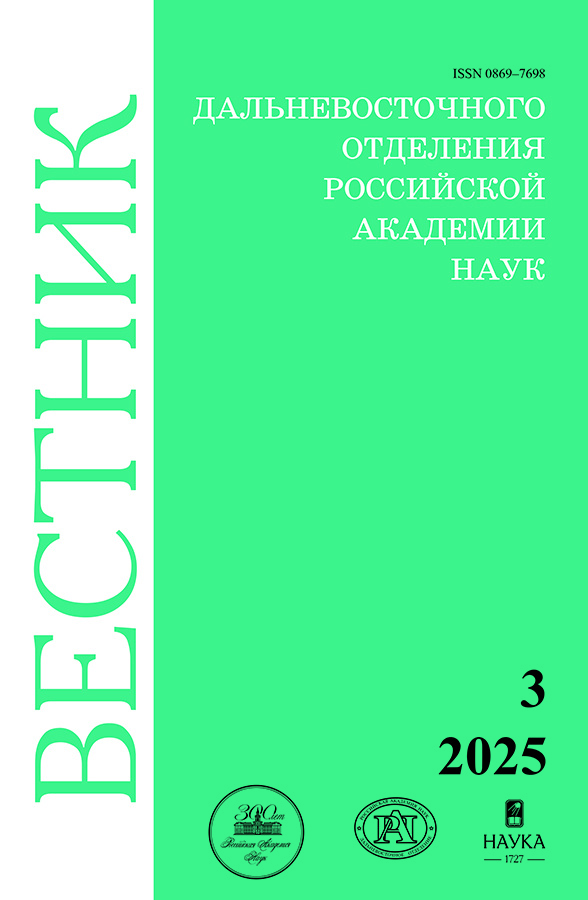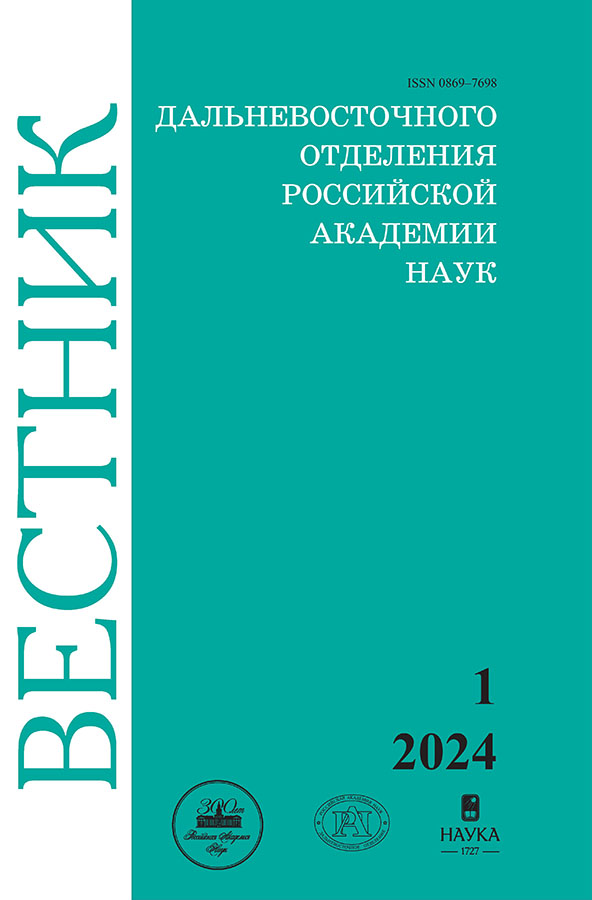Electron paramagnetic resonance on impurity copper ions in sodium trititanate with a hierarchical two-level architecture
- Authors: Saritsky D.A.1, Ziatdinov A.M.1, Zheleznov V.V.1, Opra D.P.1, Gnedenkov S.V.1
-
Affiliations:
- Institute of Chemistry FEB RAS
- Issue: No 1 (2024)
- Pages: 126-143
- Section: Chemical Sciences. Physical methods of materials research
- URL: https://archivog.com/0869-7698/article/view/676055
- DOI: https://doi.org/10.31857/S0869769824010099
- EDN: https://elibrary.ru/leevvq
- ID: 676055
Cite item
Full Text
Abstract
The results of studies of electron paramagnetic resonance on impurity copper ions in sodium trititanate (Na2Ti3O7) with a hierarchical two-level architecture, potentially suitable for use as negative electrodes of sodium-ion batteries, are presented. The main emphasis in the work was placed on the identification of magnetically different centers of the impurity copper ion, establishing the positions of these centers in the crystal lattice, determining the nature of their distributions in the volume of the sample, and elucidating the charge compensation mechanism for aliovalent substitutions. For Cu2+ ions in positions of Ti4+ substitution, the degree of a spin density delocalization from the bottom orbital to the σ-orbitals of the nearest equatorial oxygen ions was estimated.
Full Text
About the authors
Denis A. Saritsky
Institute of Chemistry FEB RAS
Email: denissaricki@mail.ru
ORCID iD: 0009-0006-2195-1042
Junior Researcher
Russian Federation, VladivostokAlbert M. Ziatdinov
Institute of Chemistry FEB RAS
Author for correspondence.
Email: ziatdinov@ich.dvo.ru
ORCID iD: 0000-0001-7917-9207
Doctor of Sciences in Physics and Mathematics, Chief Researcher, Head of the Laboratory
Russian Federation, VladivostokVeniamin V. Zheleznov
Institute of Chemistry FEB RAS
Email: zhvv53@mail.ru
Doctor of Sciences in Chemistry, Leading Researcher
Russian Federation, VladivostokDenis P. Opra
Institute of Chemistry FEB RAS
Email: dp.opra@gmail.com
ORCID iD: 0000-0003-4337-5550
Candidate of Sciences in Chemistry, Senior Researcher, Head of the Laboratory
Russian Federation, VladivostokSergey V. Gnedenkov
Institute of Chemistry FEB RAS
Email: svg21@hotmail.com
ORCID iD: 0000-0003-1576-8680
Corresponding Member of the RAS, Doctor of Sciences in Chemistry, Professor, Director
Russian Federation, VladivostokReferences
- Xia G., Zhou T., Yu X., eds. Hierarchical materials for advanced energy storage. Lausanne: Frontiers Media SA; 2020. 103 p. https://doi.org/10.3389/978–2–88966–185–5.
- Guan M., Wang Q., Zhang X., Bao J., Gong X., Liu Y. Two-dimensional transition metal oxide and hydroxide-based hierarchical architectures for advanced supercapacitor materials. Front. Chem. 2020; 8:390. https://doi.org/10.3389/fchem.2020.00390.
- Jayan J. S., Saritha A., Joseph K. Development of hierarchical nanostructures for energy storage. In: Shalan A. E., Hamdy Makhlouf A. S., Lanceros–Méndez S. (eds). Advances in nanocomposite materials for environmental and energy harvesting applications. Engineering Materials. Cham: Springer; 2022. P. 663–695. https://doi.org/10.1007/978–3–030–94319–6_21.
- Chen H., Wu Y., Duan J., Zhan R., Wei Wang W., Wang V.-Q., Chen Y., Xu M., Bao S.-J. (001) Facet-dominated hierarchically hollow Na2Ti3O7 as a high-rate anode material for sodium-ion capacitors. ACS Appl. Mater. Interfaces. 2019; 11:42197–42205. https://doi.org/10.1021/acsami.9b14560.
- Opra D. P., Sinebryukhov S. L., Neumoin A. I., Podgorbunskii A. B., Gnedenkov S. V. Mezoporistye nanotrubchatye materialy na osnove Na2Ti3O7 s ierarkhicheskoi arkhitekturoi: sintez i svoistva. ChemChemTech. 2022;65(12):37–43. (In Russ.). https://doi.org/10.6060/ivkkt.20226512.6552.
- Wang W., Liu Y., Wu X., Wang J., Fu L., Zhu Y., Wu Y., Liu X. Advances of TiO2 as negative electrode materials for sodium-ion batteries. Adv. Mater. Technol. 2018;3(9):1800004. https://doi.org/10.1002/admt.201800004.
- Doeff M. M., Cabana J., Shirpour M. Titanate anodes for sodium-ion batteries. J. Inorg. Organomet. Polym. Mater. 2014;24(1):5–14. https://doi.org/10.1007/s10904-013-9977-8.
- Wang Y., Zhu W., Guerfi A., Kim C., Zaghib K. Roles of Ti in electrode materials for sodium-ion batteries. Front. Energy Res. 2019; 7:1. https://doi.org/10.3389/fenrg.2019.00028.
- Zhang Z., Goodall J. B.M., Brown S., Karlsson L., Clark R. J.H., Hutchison J. L., Rehman I. U., Darr J. A. Continuous hydrothermal synthesis of extensive 2D sodium titanate (Na2Ti3O7) nano-sheets. Dalt. Trans. 2010; 39:711–714. https://doi.org/10.1039/B915699B.
- An Y., Li Z., Xiang H., Huang Y., Shen J. First-principle calculations for electronic structure and bonding properties in layered Na2Ti3O7. Open Phys. 2011; 9:1488–1492. https://doi.org/10.2478/s11534-011-0072-x.
- Vithal M., Rama Krishna, S., Ravi G., Palla S., Velchuri R., Pola S. Synthesis of Cu2+ and Ag+ doped Na2Ti3O7 by a facile ion-exchange method as visible-light-driven photocatalysts. Ceram. Int. 2013; 39:8429–8439. https://doi.org/10.1016/j.ceramint.2013.04.025.
- Pan H., Lu X., Yu X., Hu Y.-S., Li H., Yang X.-Q., Chen L. Sodium storage and transport properties in layered Na2Ti3O7 for room-temperature sodium-ion batteries. Adv. Energy Mater. 2013; 3:1186–1194. https://doi.org/10.1002/aenm.201300139.
- Fu S., Ni J., Xu Y., Zhang Q., Li L. Hydrogenation driven conductive Na2Ti3O7 nanoarrays as robust binder-free anodes for sodium-ion batteries. Nano Lett. 2016; 16:4544–4551. https://doi.org/10.1021/acs.nanolett.6b01805.
- Araújo-Filho A.A., Silva F. L.R., Righi A., da Silva M. B., Silva B. P., Caetano E. W.S., Freire V. N. Structural, electronic and optical properties of monoclinic na2ti3o7 from density functional theory calculations: A comparison with XRD and optical absorption measurements. J. Solid State Chem. 2017; 250:68–74. https://doi.org/10.1016/j.jssc.2017.03.017
- Garay-Rodríguez L.F., Murcia-López S., Andreu T., Moctezuma E., Torres-Martínez L.M., Morante J. R. Photocatalytic hydrogen evolution using bi-metallic (Ni/Pt) Na2Ti3O7 whiskers: Effect of the deposition order. Catalysts. 2019; 9:285. https://doi.org/10.3390/catal9030285.
- Opra D. P., Neumoin A. I., Sinebryukhov S. L., Podgorbunsky A. B., Kuryavyi V. G., Mayorov V. Yu., Ustinov A. Yu., Gnedenkov S. V. Moss-like hierarchical architecture self-assembled by ultrathin Na2Ti3O7 nanotubes: Synthesis, electrical conductivity, and electrochemical performance in sodium-ion batteries. Nanomaterials. 2022; 12:1905. https://doi.org/10.3390/nano12111905.
- Opra D. P., Gnedenkov S. V., Sinebryukhov S. L., Podgorbunskii A. B., Sokolov A. A., Ustinov A. Yu., Kuryavyi V. G., Maiorov V. Yu., Zheleznov V. V. Legirovannyi margantsem dioksid titana s uluchshennymi elektrokhimicheskimi kharakteristikami dlya litii-ionnykh akkumulyatorov. Elektrokhimicheskaya energetika. 2019;19(3):123–140. (In Russ.). https://doi.org/10.18500/1608-4039-2019-19-3-123-140.
- Opra D. P., Gnedenkov S. V., Sinebryukhov S. L., Gerasimenko A. V., Ziatdinov A. M., Sokolov A. A., Podgorbunsky A. B., Ustinov A. Yu., Kuryavyi V. G., Mayorov V. Yu., Tkachenko I. A., Sergienko V. I. Enhancing lithium and sodium storage properties of TiO2(B) nanobelts by doping with nickel and zinc. Nanomaterials. 2021;11(7):1703. https://doi.org/10.3390/nano11071703.
- Anh L. T., Rai A. K., Thi T. V. et al. Improving the electrochemical performance of anatase titanium dioxide by vanadium doping as an anode material for lithium-ion batteries. J. Power Sources. 2013;243:891– 898. https://doi.org/10.1016/j.jpowsour.2013.06.080.
- Opra D. P., Gnedenkov S. V., Sinebryukhov S. L., Podgorbunsky A. B., Sokolov A. A., Ustinov A. Yu., Kuryavyi V. G., Mayorov V. Yu., Zheleznov V. V. Doping of titania with manganese for improving cycling and rate performances in lithium-ion batteries. Chem. Phys. 2020;538(1):110864. https://doi.org/10.1016/j.chemphys.2020.110864.
- Sekhar M. C., Reddy B. P., Vattikuti S. V.P. et al. Structural, magnetic, and catalytic properties of Mn-doped titania nanoparticles synthesized by a sol–gel process. J. Cluster Science. 2018; 29:1255–1267. https://doi.org/10.1007/s10876–018–1437–8.
- Mabbs F. E., Collison D. (eds). Electron paramagnetic resonance of d transition metal compounds. Vol. 16. Elsevier: Amsterdam, Netherlands; 1992. 1326 p.
- Zhidomirov G. M., Lebedev Ya.S., Dobryakov S. N., Shteynshneyder N. Y., Chirkov A. K., Gubanov V. A. Interpretatsiya slozhnykh spektrov EPR. Moskva: Nauka; 1975. 216 s. (In Russ.).
- Ramaswamy V., Bhagwat M., Srinivas D., Ramaswamy A. V. Structural and spectral features of nano-crystalline copper-stabilized zirconia. Catal. Today. 2004;97(1):63–70. https://doi.org/10.1016/j.cattod.2004.06.141.
- Wang Z., Liu Q., Yu J., Wu T., Wang G. Surface structure and catalytic behavior of silica-supported copper catalysts prepared by impregnation and sol–gel methods. Appl. Catal. A: Gen. 2003; 239:87–94. https://doi.org/10.1016/S0926-860X(02)00421-0.
- Miyamoto S. N., Miyamoto R., Giamello E., Kurisaki T., Hisanobu W. Evaluation of coexistent metal ions with TiO2: an EPR approach. Res. Chem. Intermed. 2018; 44:4563–4575. https://doi.org/10.1007/s11164–018–3468-z.
- Weil J., Bolton J. R. Electron paramagnetic resonance: Elementary theory and practical applications. 2nd ed. New Jersey: Wiley Interscience; 2007. 688 p.
- Cordoba G., Viniegra V., Fierro J. L.G., Padilla J., Arroyo R. TPR, ESR, and XPS study of Cu2+ ions in sol–gel-derived TiO2. Solid St. Chem. 1998;138(1):1–6. http://dx.doi.org/10.1006/jssc.1997.7690.
- Dudley R. J., Hathaway B. J. Single-crystal electronic and E.S.R. spectra of bis-(aquo)monoacetylacetonatocopper(II) picrate. J. Chem. Soc. A. 1970; 0:1725–1728.
- Billing D. E., Dudley R. J., Hathaway B. J., Tomlinson A. A. G. Single-crystal electronic and electron spin resonance spectra of dichloroaquo-(2,9-dimethyl-l,10-phenanthroline)copper(II). J. Chem. Soc. A. 1971; 0:691–696. http://dx.doi.org/10.1039/J19710000691.
- Narayana P. A., Sastry K. V.L.N. Core polarization of NH4Br: Cu2+. J. Chem. Phys. 1972;57(8):3266– 3268. https://doi.org/10.1063/1.1678750.
- Garribba E., Micera G. The determination of the geometry of Cu(II) complexes: An EPR spectroscopy experiment. J. Chem. Educ. 2006; 83:1229–1232. https://doi.org/10.1021/ed083p1229.
- Reyes-Garcia E.A., Sun Y., Reyes-Gil K.R., Raftery D. Solid-state NMR and EPR analysis of carbon-doped titanium dioxide photocatalysts (TiO2-xCx). Solid State Nucl. Magn. Reson. 2009;35;74–81. https://doi.org/10.1016/j.ssnmr.2009.02.004.
- Serwicka E. ESR study on the interaction of water vapour with polycrystalline TiO2 under illumination. Colloids Surf. 1985;13(4):287–293. https://doi.org/10.1016/0166-6622(85)80028-7.
- Yang G., Jiang Z., Shi H., Xiao T., Yan Z. Preparation of highly visible-light active N-doped TiO2 photocatalyst. J. Mater. Chem. 2010;20(25):5301–5309. https://doi.org/10.1039/C0JM00376J.
- Andersson S., Wadsley A. D. The crystal structure of Na2Ti3O7. Acta Cryst. 1961; 14:1245–1249. https://doi.org/10.1107/S0365110X61003636.
- Yakubovich O. V., Kireev V. V. Refinement of the crystal structure of Na2Ti3O7. Crystallogr. Rep. 2003;48(1):24–28. https://doi.org/10.1134/1.1541737.
- Li N., Zhang L., Chen Y., Fang M., Zhang J., Wang H. Highly efficient, irreversible and selective ion exchange property of layered titanate nanostructures. Adv. Funct. Mater. 2012; 22:835–841. https://doi.org/10.1002/adfm.201102272.
- Umek P., Pregelj M., Gloter A., Cevc P., Jaglicic Z., Ceh M., Pirnat U., Arcon D. Coordination of intercalated Cu2+ sites in copper doped sodium titanate nanotubes and nanoribbons. J. Phys. Chem. C. 2008; 112:15311–15319. https://doi.org/10.1021/jp805005k.
- Hoffman S. K., Goslar J., Tadyszak K. Electronic structure and dynamics of low symmetry Cu2+ complexes in kainite-type crystal KZnClSO4·3H2O: EPR and ESE studies. J. Magn. Reson. 2010;205(2)293– 303. https://doi.org/10.1016/j.jmr.2010.05.014.
- Attanasio D. ESR Study of Bis(ω-nitroacetophenonato)bis(4-methylpyridine)Cu(II): A six-coordinated low-symmetry copper chelate. J. Magn. Reson. 1977;26(1):81–91. https://doi.org/10.1016/0022-2364(77)90237-2.
- Kivelson D., Neiman R. ESR Studies on the Bonding in Copper Complexes. J. Chem. Phys. 1961;35(1):149–155. https://doi.org/10.1063/1.1731880.
- Abragam A., Pryce M. H. L. Theory of the nuclear hyperfine structure of paramagnetic resonance spectra in crystals. Proc. R. Soc. Lond. A. 1951;205(1080):135–153. https://doi.org/10.1098/rspa.1951.0022.
- Abragam A., Pryce M. H. L. The theory of the nuclear hyperfine structure of paramagnetic resonance spectra in the copper Tutton salts. Proc. R. Soc. Lond. A. 1951;206(1085):164–172. https://doi.org/10.1098/rspa.1951.0062.
- Aswani T., Pushpa Manjari V., Babu B., Muntaz Begum Sk., Rama Sundari G., Ravindranadh K., Ravikumar R. V.S.S.N. Spectral characterizations of undoped and Cu2+ doped CdO nanopowder. J. Mol. Struct. 2014; 1063:178–183. https://doi.org/10.1016/j.molstruc.2014.01.059.
- Azumi T., Kazuo M. What does the term “Vibronic coupling” mean? Photochem. Photobiol. 1977;25(3):315–326. https://doi.org/10.1111/j.1751-1097.1977.tb06918.x.
- O’Brien M.C.M. The dynamic Jahn-Teller effect in octahedrally co-ordinated d9 ions. Proc. R. Soc. Lond. A. 1964;281(1386):323–339. https://doi.org/10.1098/rspa.1964.0185.
- Flurry R. L. Symmetry Groups. Theory and Chemical Applications. Prentice-Hall, Inc.: New Jersey, USA; 1980. 356 p.
- Ensign T. C., Chang T., Kahn A. H. Hyperfine and nuclear quadrupole interactions in copper-doped TiO2. Phys. Rev. 1969;188(2):703–709. https://doi.org/10.1103/PhysRev.188.703.
- Dong H. N., Wu S. Y., Li P. Theoretical explanation of EPR parameters for Cu2+ ion in TiO2 crystal. Phys. Stat. Sol. (b). 2004;241(8):1935–1938. https://doi.org/10.1002/pssb.200402033.
Supplementary files











